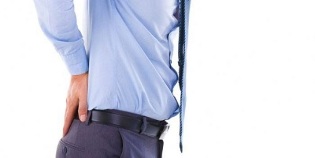Medical statistics confirm that most men on our planet know directly what prostatitis is. However, the disease is not always quickly detected and treated. If we talk about the age of the disease, the symptoms of prostatitis can be diagnosed at the age of 18, but the prolonged chronic course of the disease with inflammation of the gland (prostate gland) is characteristic of the patient. old.
What is prostatitis in men
The name of the disease comes from the Latin "prostatitis", literally translated as prostate and inflammatory. Prostatitis in men is the common name for inflammation in the prostate gland, an overall picture of the cause and the mechanism of development of the disease is not fully understood. Symptoms of prostatitis are not difficult to recognize, but it should be noted that in all patients, the disease progresses under an individual scenario, it can develop without special symptoms, withoutconspicuously transformed into a chronic form.
What is prostatitis in men?

Doctors divide diseases into different forms according to the patient's clinical picture and symptoms. It can be acute, chronic, due to bacteria, volume, congestion, infection, pus, and depending on this, prostatitis manifests itself in the form of various symptoms.
This can be diagnosed with sudden severe pain in the scrotum, difficulty urinating, and weak energy. When infected, sperm characteristics and ejaculation quality are impaired. If at least one of the symptoms listed appears, seek medical attention.
Signs of prostatitis
Symptoms can be diagnosed by taking a general urine and blood test. Research will help identify the culprit that caused the occurrence of the disease and it could be a number of infections: for example, trichomoniasis, vitiligo, chlamydia, and even gonorrhea. The bacteria enter the local area through blood vessels from the bladder or rectum and cause health problems. The non-bacterial form is not detected by the tests, however, this is not an indication that the bacteria is not present. The consequences of both can be dire.
Signs of inflammatory prostatitis in men are divided into two stages - latent and active. Early stages have minor symptoms, but have already shown the presence of the disease. The latent stage can last for years, manifested as a discomfort in the scrotum, sometimes in the tip of the penis, anus. As a rule, men assume this is due to simple fatigue. As the pain gets worse and bladder emptiness begins to cause major problems, this means the inflammation is progressing and the disease has entered an active phase.
First marker

The disease has many stages of development. Initially, it may cause a feeling of constant urge to urinate and during the defecation you may experience pain and burning. Pain in the lower back, pelvic area and groin.
When you discover the first signs of prostatitis in men, you need to see an endocrinologist to not complicate the situation and keep men healthy.
Symptoms of prostatitis
Illness can manifest itself through three main symptoms:
- was constantly urge to go to the bathroom;
- pain;
- weak or absent erection.
External symptoms of prostatitis include urinary problems. Low urine pressure, emptying the bladder is accompanied by pain, and there may not be a complete flow of urine (in medicine, this is called hematuria). This is caused by compression of the urethra by the inflamed gland. If inflammation is allowed to develop, it engulfs the urethra, rectum, or genital system or provokes tumor growth. After age 30, all men should have a routine checkup by a specialist every year.
Prostatitis causes quite different symptoms of prostatitis. Symptoms of acute prostatitis can be severe and cause a very strong general discomfort; with chronic prostatitis, symptoms are usually milder. Not all patients necessarily have the full spectrum of the symptoms of the disease, the severity of symptoms can vary depending on the body condition and other factors.
In order to protect himself from the onslaught of disease a man should avoid:
- hypothermia;
- unbalanced diet (excluding fried foods, canned foods, alcohol);
- sedentary lifestyle;
- bad habit;
- irregular sex life,
- Frequent sexual erections without ejaculation.
Pains

The main symptom associated with local symptoms is pain. By their nature, they are soreness, pulling, flare-ups or frustrations. Prostatitis pain in men is mild or strong and is always concentrated in the perineum, anal area or sacrum.
The cause of pain symptoms is that the prostate is irritated by the products of the inflammatory process. What are other symptoms of prostatitis?
Featured Content
Pain may be accompanied by drainage. From the outer opening of the urethra, usually exudates with different degrees of transparency, density and color, for example, a milky consistency when urinating or defecating. In the chronic form, the patient may experience an increase in sperm production - semen in small portions during bowel movements and muscle tension in the perineum.
Male prostate secretions may be green in color. They are also observed with a slow progression of the disease, as they include damaged epithelium, mucus, leukocytes. This type of discharge, the presence of a symptom of pain, chills and a high body temperature indicate that the disease turns acute. If the patient does not go to a urologist, the disease can cause serious diseases: hardening of the prostate gland, infertility.
Symptoms of chronic prostatitis
The first symptoms of chronic prostatitis can be considered the appearance of a feeling of discomfort, pain in the lower abdomen, sometimes in the lower back and hips. Sexual dysfunction progresses within a few days. At the end of intercourse, pulling pain may occur at the tip of the penis and should go away on its own within a few minutes. Eventually, each urination begins with a burning sensation and pain, which gradually increases.
Symptoms of acute prostatitis in men

In this body, the disease is divided into infectious form, cystic form, purulent form. In the first case, symptoms of acute prostatitis in men are characterized by problems with urination, in the second case they are complemented by pain in the scrotum and fever. In the third case, the disease manifests itself in the form of an abscess of the gland and is most strongly manifested in all of the above symptoms.
Treatment of prostatitis in men
The course of treatment involves measures to eliminate inflammation and congestion in the prostate gland. Success depends on getting rid of them quickly. Treatment of prostatitis in men begins with a diagnosis, identifying the root of the problem. The doctor will take a gauze pad from the urethra and if the result is positive, antibiotic therapy will be prescribed. The duration of treatment will depend on the degree of damage to the body and the effectiveness of existing symptoms.
Young people get sick, in most cases, due to underlying hypothermia. As a result, the acute form of the disease progresses, against which antibiotic therapy is performed. If prostatitis is provoked by stress, then the root of the disease is treated by a neurologist. In such cases, the doctor appoints a relaxing massage, electrophoresis and vitamin intake. Without eliminating the cause of the disease, it cannot be cured.
When the symptoms of prostatitis and prostate adenoma appear, the following mechanism of treatment is applied:
- Antibiotics are an important ingredient in the treatment of infectious diseases. The composition of the drug should have a broad spectrum of action.
- Alpha blockers may be prescribed to improve blood circulation, quickly restore the prostate gland.
- To restore the hormonal system, your doctor may recommend hormonal medications.
- Muscle relaxants prescribed by a specialist will reduce striated muscles of the gland.
Herbal remedies are often used in the complex treatment of inflammatory prostate disease.
If the above methods do not produce the desired results, surgical intervention will be used. Sometimes it can be the only possible treatment.
Acute and chronic prostatitis syndromes in men can be treated with laser therapy. This method heals acini (the functional unit of the gland) and increases the patient's defenses. Chronic prostatitis can be treated with both lasers and drugs. With the severe form of the disease with no special signs, the laser helps the patient quickly improve the condition: after two or three courses, the pain disappears, the effect is completely restored.
























